To celebrate Hispanic Heritage Month, our Hispanic/Latinx affinity group, GSDyM, has put together a list of recommendations ranging from hit Netflix shows in Spanish that have become internationally successful to works of literature to authentic places to shop/eat. There is an abundance of Hispanic talent out there…. Please enjoy our recommendations to help support the Hispanic community as you become inspired by our beautiful culture.
Movies
We created a selection based on our favorite award-winning movies and some “classics.” Some of these movies are great for learning Spanish. If the Spanish is too quick for you, we recommend using subtitles to follow along, or simply watch in English and know that you are supporting Hispanic filmmakers. Grab some Takis con salsa and hit play.
-
- Roma: This award-winning film was recently nominated for best picture at the Oscars. The main actress, Yalitza Aparicio is the first indigenous Mexican Best Actress Oscar nominee. It’s a masterpiece in cinema.

- Selena: A Mexican-American, English-speaking girl learns to sing Tejano music in Spanish and becomes a groundbreaking star in the Tejano music genre. This movie deals with several themes: women in music (specifically, Tejano music), the expectations/judgements of Mexican-Americans who do not speak fluent Spanish and being a “crossover” musician.

- Ya no estoy aquí (I’m No Longer Here): I recently watched the movie on Netflix and really enjoyed the art, music, cinematography and story around it. It is also very close to my heart as it is based in my hometown, Monterrey, Mexico, and it’s about a 17-year-old “Cholombiano” who escapes Mexico and tries to make a life for himself in New York City.
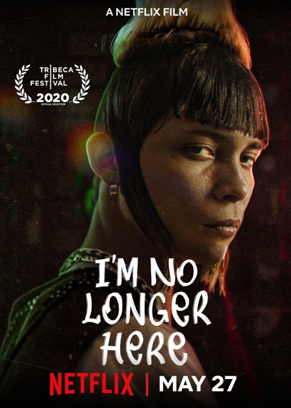
- Nosotros los nobles (The Noble Family): This is a classic, Mexican dark comedy about a rich family with spoiled children who go from living the dream life to not having a single cent.
- Como caído del cielo: Inspired by the life of Mexican legendary actor-singer Pedro Infante, this movie stars comedian Omar Chaparro who portrays Infante’s beloved music beautifully.
- Live Twice, Love Once: This is a sweet, light movie about a man who has been diagnosed with Alzheimer’s disease seeking out his childhood love—good for learning Spanish (subtitled).
- Orfeu Negro/Black Orpheus: A classic movie set in Brazil during Carnival intertwined with Greek myth of Orpheus; largely Afro-Brazilian cast.
- McFarland, USA: This is a great family movie based on a true story of runners from McFarland, an economically challenged town in California, and building a cross country team in a predominantly Latino high school.
- Mi Vida Loca: Two teen best friends who consider themselves cholas and are immersed in gang life in 90s Echo Park find their friendship put to the test when they both become pregnant by the same young man. I love the look of the girls in this movie. It reminds me of the way girls dressed when I was in school. It also portrays teen gang life and neighborhood violence.
- Lone Star: This murder mystery goes back and forth in time from the late 50s to the 90s and is set in a border town. Themes include Mexican American life in a border town, the theme of “borders” and what that means literally and figuratively, police corruption, and also racism in a town that includes a large Hispanic and Black population that are both still distinctly “separate.”
- La Bamba: Ritchie Valens went from doing farm work to becoming one of the first Chicano rock stars. His hit song was sung entirely in Spanish. I love how this movie portrays the work ethic of the farm workers, life for Californian Chicanos and the fact that it’s about early rock music.
- Stand and Deliver: A group of Hispanic kids from a school in the “bad part of town” who were essentially written off as “unteachable” learn advanced mathematics. It’s an honest look at the educational system in underserved communities, the Hispanic family structure and expectations within, and a bit about internalized racism.
TV Shows
Netflix and other streaming platforms are doing a great job bringing Spanish-language shows to the U.S. AND making them international hits. Here is our list of must-see TV shows:
- Club de Cuervos: A comedy centered around a brother and sister having a power struggle over their family’s treasured fútbol (soccer) club.
- La Casa de Papel (Money Heist): An action/drama show about a group of criminals trying to pull off the biggest bank robbery in Spain.
- Latin History for Morons: Inspired by the absence of Latinos in his son’s school, John Leguizamo breaks down 3,000 years of Latin American history.
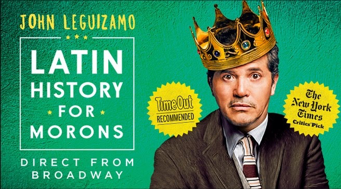
- Celia: This show focuses on the life of artist Celia Cruz and how she went from being a shy, skinny girl from Cuba to the Queen of Salsa. The music will make you want to dance!
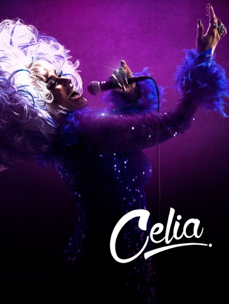
- Jane the Virgin: American romantic comedy and telenovela full of Spanglish, food and dancing
- El tiempo entre costuras (The Time in Between): This Spanish drama series is based on the novel by Maria Dueñas (book also recommended). It is about a Madrileña seamstress turned spy who finds herself stuck in Morocco around the time of the Spanish Civil War. It is a beautiful story, and the costumes are amazing.
- Velvet: a Spanish drama show set in the 80s about a love story between a seamstress and a young man destined to inherit the majestic fashion empire ruled by his father.
- Immigration Nation: Documentary on Netflix based on how ICE has changed since the last presidency

- Orange is the New Black: They have dynamic characters with cultural depth–celebrated for having a diverse cast.
Literature
Book-lovers, check out these must-read titles in English or Spanish!
- The Alchemist by Paulo Coehlo: Brazilian novelist, Paulo Coehlo, is one of my favorite authors. You’ve probably heard of his best-selling book called The Alchemist, which at one point was the most translated book in history (other than the Bible, I think). My other favorite books from him include: Brida, Veronika Decides to Die and The Devil and Miss Prym.
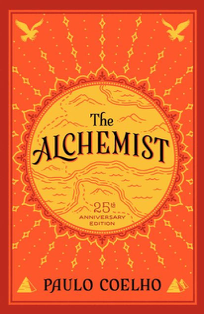
- Alma and How She Got Her Name by Juana Martinez-Neal: Martinez-Neal is a Peruvian American children’s book author and illustrator.

- The Diary of Frida Kahlo: An Intimate Self‑Portrait: Frida’s amazing illustrated journal reflects her art, writings and love for Diego.
- Other book recommendations:
- Tear This Heart Out by Ángeles Mastretta, Cien Años de Soledad by Gabriel Garcia Marquez, The Chicana Feminist by Martha P. Cotera, The House of Spirit by Isabel Allende, Hopscotch by Julio Cortázar, Don Quixote by Miguel de Cervantes
Music
Whether you enjoy music for dancing, relaxing, inspiration or nostalgia, these bands and albums have you covered!
- Canciones de Mi Padre, Linda Ronstadt: If you love listening to mariachis, or mariachi music makes you tear up (like it does me), check out Linda’s album of traditional mariachi music.

- De Mexico, Reik: album has acoustic covers of classic songs
- Los Lobos Del Este De Los Angeles: Los Lobos performs traditional party songs in Spanish.
- Bidi Bidi Banda: It’s an Austin-based Selena cover band!
- Mi Tierra and 90 Millas: Two of Gloria Estefan’s Spanish-language albums
- Little Joe y La Familia: Tex-Mex Funk
- Flaco Jiménez NPR Session
- Concha Buika: Spanish Gitana music
- Also check out music by: Los Ángeles Azules, Cuco, Máximo Grado, Los Nuevos Rebeldes, Banda Renovación, Marca Registrada, Larry Hernández, El Potro De Sinaloa, Grupo Delta, Gerardo Ortiz, Lenin Ramírez, Javier Torres
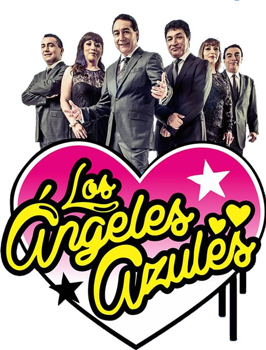
Website/Blog/Media outlets
Rejoice, social media hounds and webbies, we’ve got your online entertainment right here.
- Remezcla is a content website that keeps you up to date with anything cool in the Latinx community. Right now, they are also putting on live music events that are so fun!
- Pero Like, Buzzfeed’s hispanic community, has a ton of fun content on Hispanic culture in both English and Spanish. Great way to learn about different cultures while having fun!

- Se regalan dudas – Spanish-language podcast. The focus of the podcast is to speak about taboo themes without prejudice, like mental health, abortion, rape and sexuality.
- We are mitú is a channel with a Latino point of view. They have very cool and informative content about music, food, sex, politics and all things that matter on both their website and Instagram page.
- Latinx Parenting – Parenting resources rooted in social justice and children’s rights
ATX Restaurants
Hungry? Restaurants are slowly starting to open back up, but there’s always “para llevar.”
- Cuantos Tacos: Food truck with the best tacos in Austin
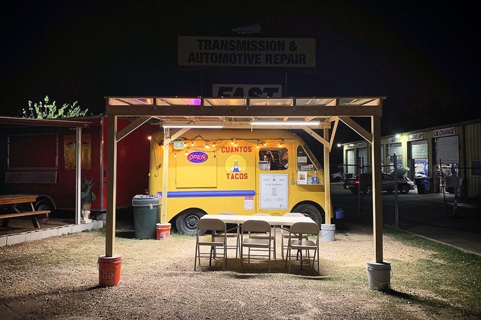
- Suerte: Suadero tacos have been featured in many magazines and documentaries.
- El Alma: higher-end Mexican food restaurant with craft cocktails
- Joe’s Bakery & Coffee Shop: Mexican breakfast and lunch, pan dulce
- Mr. Natural: Vegetarian, vegan and gluten-free Mexican food and bakery
- Hecho En Mexico: They are family owned and their mole is sooo good. I recommend the sampler mole plate!
- Granny’s Tacos: They have the best fat breakfast tacos from a trailer, and that’s a hill I’ll die on.
- The Vegan Nom: Food truck with vegan tacos and queso
- Licha’s Cantina: The food of Mexico City in a space with East Austin vibes
Local Culture
- Esquina Tango (dance studio): Salsa, Bachata, Samba, Tango, Salsa Aerobics, Afro-Latin dance, Conversational Portuguese classes (Right now, they are offering online classes by donation and outdoor classes by reservation.)

- Austin Samba: Learn to play drums or dance samba with others in the Austin community. Perform at local parades, events and Carnaval Brasileiro. There is a small donation for new members during open season (begins in May). Do not need to have played an instrument or danced samba to participate.
- Roy Lozano’s Ballet Folklorico: Classes in ballet folklorico for children and adults of all levels
- Mexic-Arte Museum: They also hold the annual Viva la Vida Parade celebrating the Day of the Dead.
- Puerto Rican Cultural Center: They offer classes in dance, theater, music and also hold workshops and events.
Creators (artists, local craft makers, etc.)
Gift-giving season is right around the corner!
- @FridaFridayATX: This is Austin’s first-and-only monthly WOC-centered mercado y más supporting and amplifying WOC in Tejaslandia! It’s more than a market, it’s a movement.
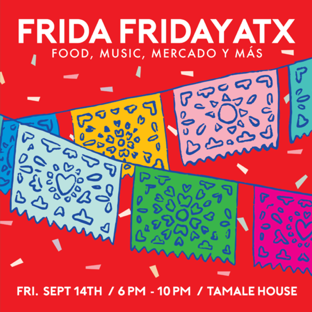
- @VeryThat: A San Antonio native who creates products that resonate with the Hispanic community, such as mugs, stickers and calendars with popular Hispanic figures and phrases like, “Chingona como mi Madre,” “Échale Ganas,” “Tacos Before Vatos” and more. Check her out!

- Carlos Bazán Ramos is a Mixtec (Oaxaca) painter and muralist. He is known to be one of the promising young artists of plastic Oaxacan arts and was recently selected to collaborate with Disney.
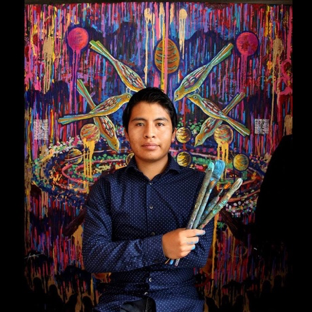
- Dr. Lakra: A Mexican artist and tattooist based in Oaxaca, Dr. Lakra works on vintage printed materials and found objects instead of skin, incorporating images of pinups, old-time Mexican businessmen and professional wrestlers.
- @PriscilaGarciaJacquier: Colombian journalist dedicated to deconstructing Latinidad
- @thenycyogini: Patricia Pinto is a Venezulan yogi whose work is inspiring and effective.
- @perreopandemico: Christine Amy used to be a creative at GSD&M. She’s created an Instagram account where she rewrites lyrics of famous reggaeton songs to make light of the pandemic and 2020 in general (mostly in Spanish, Puerto Rican).
Recently, Austin was named one of the top 10 best places for the LGBTQ+ community to live, just in time for Austin Pride this weekend. Ahead of the celebration, we chatted with members of the LGBTQ+ community and allies within the agency about what inclusivity means to them and how creativity can’t thrive without it. Keep reading to learn more about how an inclusive city and work environment makes all the difference.
Kirya Francis, VP of Diversity and Inclusion
How do you define inclusion?
I like to think of inclusion to be more like a salad. You come together as individuals and you get to stay an individual, but your presence will be missed if you are not there.
Why is it important for a company to participate in inclusive initiatives?
A company’s primary responsibility is to be profitable so that it can stay in business and employ talent. Inclusion makes people happier to be there, and happier people make a better product.
Kyle Nguyen, Media Planner/Campaign Manager
How have you experienced inclusion at GSD&M?
GSD&M’s culture is inherently inclusive with participation in community events like the Allies Diversity Summit and various panels where GSD&Mers share their stories.
How does an inclusive environment benefit the work that comes out of GSD&M?
It breaks down walls. The less time we worry about how others perceive us, the more time we have to focus that energy on actually working by bringing our authentic selves to work.
Josh Andrews, Assistant Account Manager
Why is it important for a company to participate in inclusive initiatives?
It’s important for employees to see reflections of themselves and their identities at work. Without a place to be yourself, employees risk losing themselves to the nature of putting up a guard to those around them.
How have you experienced inclusion in Austin and at GSD&M?
There are LGBTQIA sports teams, book clubs and even Zilker meet-ups. I’m very happy to see the solidarity of GSD&M walking in Austin’s Pride parade, so cheers to that!
Ashley Davidson, Digital Producer
How do you define inclusion?
Inclusion is providing an atmosphere of support and involvement for all people regardless of race, religion, background, abilities, gender or sexual orientation. An inclusive environment empowers, educates and collaborates so an individual’s worth is recognized by all.
Why is it important for a company to participate in inclusive initiatives?
Inclusivity initiatives that support all groups are important for morale, productivity, safety and community-building. You build a stronger company where people both tolerate and celebrate each other’s differences.
Ana Leen, Account Leadership
How have you experienced inclusion at GSD&M?
Through partnering with organizations like ADCOLOR, E4Youth, Time’s Up/Advertising, Austin Pride and more, we’re both impacting and learning from our community that feeds the pipeline of creativity.
How does an inclusive environment benefit the work that comes out of GSD&M?
We will think beyond the norm. We will come up with ideas and creative that connect with people in new ways. We will give brands the opportunity to do things differently and stand out from the competition.
Companies need to push inclusion initiatives throughout the year, not just during Pride month. While we’re lucky to live in a welcoming city like Austin, we should never take that for granted. We must continuously celebrate and advocate for inclusion to better our community, our industry and the society in which we live. It’s a disservice to creativity and culture at large if we are not including and representing all voices and speaking up for those who aren’t heard.
What’s the best way to get out and away from our desks? Music, drinks, chips, queso and friends. For this edition of GSD&M Presents, local Austin band, SMiiLE, brought the dreamy, psych-pop vibes right to our backyard. It doesn’t get much better than this!
“It’s revitalizing to know that SMiiLE is making the kind of pop-inclined yet defiantly eclectic music that made the indie-rock scene so exciting to follow in the 2000s, and you’d be hard-pressed to find any band in the Austin music scene making art-pop that sounds this frenetic, joyous or vital.” —Do512
Watch a recap of the performance below!
Following an overnight drive from Albuquerque to Austin, Arizona folk-rockers made an appearance at GSD&M to play some new tunes for us as they started their national tour with Lydia. Their boisterous set in the middle of the agency filled the halls with good vibes and now we’re all impatiently awaiting the new record.
“Jared & The Mill are straight-shooters. From the start, the indie rockers have made a living out of telling like it is without any strings or frills attached. That extends to their sound, too, replete with swirling, gothic rhythms, rich guitar tones, and sincere vocal deliveries, which feature on their forthcoming album set to be released in early 2019.” –PopMatters, on the latest single, Feels Like.
Pearl Charles is a California native who is flawlessly dreamy with songs that are gritty and honest. She recently stopped by GSD&M to perform an intimate set in our backyard and we’re still jamming her latest tunes.
“Charles’ record takes cues from movements all over the American map. There are hints of southern folk, alt-country, Midwest Americana and West Coast acid rock.” —Pitchfork
Here it comes. The big game. Super Bowl 50. Super Bowl L…uh, okay, 50 sounds better. It’s been the big game for football for 50 years. It’s also been the big game for advertising almost that long. But what is so big about the big game for advertisers and marketers? Is it the inflated media budgets? The staggering number of eyeballs watching? The opportunity for pull-out-all-the-stops celebrity spots? Perhaps…
When you think about it though, the big game is only as big as we want it to be. After all, it is just a game: a bunch of guys playing catch with a ball, a four-hour time-suck in front of a screen, dozens of commercials trying to get you to buy something.
Or maybe something different. Something bigger and better: athletes who have worked their entire lives honing their skills, strengths and accuracy to prove themselves on the biggest stage of their lives; a worldwide moment when fans and admirers alike can ride the emotional rollercoaster of the scoreboard and join together to will their favorite to win; and brands who are working to become less of an interruption in your programming and instead a welcomed guest in your home.
And for us, as GSD&Mers and stewards of great brands, that makes it no different than what we try to do every day. We as a team strive restlessly each and every day to get great creative, mind-blowing and groundbreaking work out the door. We are always striving to do what’s never been done for our clients or for any brand before and discover and capture unique insights that lead us to create something truly worth seeing, and worth speaking about before, during the game…and long after.
Sure, it is nice to have a media platform that will reach 114 million viewers, which we do this year with another fantastic Avocados From Mexico spot. But after it runs and the hype of the Super Bowl fades away, we still want to speak to the one. The one person in our sights who genuinely wants the product we are sharing. To the one it will actually make a difference for.
So here’s to the big game. Here’s to being dreamers, doers and storytellers. And here’s to every other big game we play every day in this crazy business we love so darn much. And finally, here’s to every single GSD&Mer and beyond who works so hard as a team to make great work happen. Enjoy it! After all, you made it.
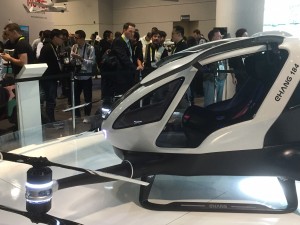 As a self-professed technophile, attending CES was a life goal for me. So in heading to 2016 CES, I couldn’t wait to find the next great thing to connect with my Sonos, Hue and SmartThings and make my “connected life” complete. More importantly, this was an opportunity to find the new advancements that would be game changers for our department, agency and clients. Bring it, Vegas!
As a self-professed technophile, attending CES was a life goal for me. So in heading to 2016 CES, I couldn’t wait to find the next great thing to connect with my Sonos, Hue and SmartThings and make my “connected life” complete. More importantly, this was an opportunity to find the new advancements that would be game changers for our department, agency and clients. Bring it, Vegas!
But, upon arrival, as I stood longingly in front of a smart refrigerator that alerts you when your food is near expiration and creates a grocery list based on your purchasing patterns, an unexpected thought occurred to me: Not many (okay, none) of my friends or peers are jumping at the opportunity to have their home play their theme song when they rise in the morning or for their lights to alter to match their mood when they return home from work. In fact, I suspect the average American consumer is barely aware that CES—or this type of technology offering—even exists.
So if it doesn’t apply to everyone, how does technology of the future apply to the audiences of today?
Brands have to find ways to make ultra-forward-thinking technology accessible for and adoptable by the mass consumer. And by doing so, brands have to be realistic about adoption curves.
Brands have to look for insights into the problems technology is attempting to solve and find more realistic ways to address these issues.
Let’s use my coveted refrigerator as an example. Sure, it’d be great if I got a text when my guacamole was about to expire. But the bigger issue here is less about having excess tortilla chips and nowhere to dip them and more about the global problem of food waste vs. food scarcity. Now that’s an entirely different subject for a separate blog post, but my point is that high-end technology isn’t the only way to solve the problem of food waste.
Packaging: Let’s rethink it. What if food packaging changed color when nearing expiration? Or, food that had a 1–2 day refrigerator life was placed in green bags, while food lasting 3–5 days had an orange package?
Existing data. Grocery stores and brands already know what consumers are purchasing. What if we used the technology that gives certain customers certain coupons to send notifications when the bananas they bought last week were better fit for banana bread?
Communities that work. The social network Nextdoor has made it exceptionally easy to alert neighbors of a lost pet. Could like-apps also offer up to neighbors that carton of milk or unopened tub of guacamole that will go bad while you’re at CES?
Perhaps I have a personal plight with the items in my fridge, but this is the type of thinking that CES inspired. What problems can we solve with the technology we already have, rather than assuming consumers are ready to adopt the latest-and-greatest—in smart fridges?
How can we solve transportation and commuter issues until the drone is ready for prime time? How can we make reality better than the virtual version?
Don’t get me wrong. I think technology is one of our best approaches to solving problems. But in doing so we can’t lose sight of the people who have never heard of CES and will never understand the need for a $10K refrigerator that beeps when their bananas are no longer that perfect shade of yellow.
We, as consumers, brands and advertisers have to be smarter than the smart things.
Now, about that robotic dog. Dog ownership sounds hard, so this is problem solver I could get behind. See you at the “dog” park.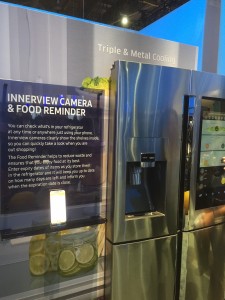
I became a soldier at the Ad Age Digital Conference. I am joining the war on click-through rates (CTR).
Everyone who is anyone in digital advertising knows that CTR is a silly metric. Articles preaching the death of CTR can be found dating back a decade if you look.
But we still use it! We use it all the time. I myself have put CTR as the KPI on a measurement slide. I admit it.
But the fact is clicks on banners do not correlate to brand lift or sales or site traffic or store traffic.
Thanks to some talks at Ad Age’s Digital Conference—specifically Shenan Reed from MEC and Tony Haile from Chartbeat—I have the courage to shun CTR. I have that courage because they put the data in front of me and it implicitly makes sense. It’s not clicks that create lift; it’s time. “Brand recall increases 30% for readers who spend 10 seconds with an ad versus five.” We’ve been transacting in time on TV for decades; why shouldn’t we apply that knowledge to digital?
I don’t think we’re ready to fully transact on time. I’m just not as courageous as Shenan, I guess. But I do think we are more than ready to optimize to time and report on it and use it to calculate success in advertising.
So I’m going to war. I’m not going to lie to myself or my clients and say that click-through rate is a proxy for awareness or engagement or anything else. If the goal is awareness, let’s get a brand study and ask people if they are aware. If it’s sales, let’s track them. If it’s store traffic, let’s conduct a foot traffic study.
Just because we can measure something doesn’t mean it matters. We have amazing measurement tools in this space, so let’s use them.
I’m a media planner and I think I create some damn good plans, and I’m going to prove it—really prove it—by measuring what counts, not clicks.
I’ve nearly always been a planner, relished sketching out the blow-by-blow for any given day, vacation or event, seeking the best way to optimize my enjoyment of the experience at hand. Then I had kids. And yes, I still do a lot of planning for things directly related to my job of course and select household projects, but my energy and thrill for strict insistence on planning for everything seems to have faded on multiple levels over the last several years.
Cut scene to my second-ever SXSW conference today. In my defense, I was given my formal registration late…as in…Thursday. I kept meaning to glance over the panels and different events before arriving at the Convention Center Saturday morning…but well, I chose to put out my fires at work and then play with my kids when I was home instead. So it felt almost alien to arrive for badge pickup and truly have no idea where I was heading after I tossed it round my neck. Those who have always been carefree souls will laugh at my discomfort as I tried to follow in their footsteps nonchalantly, pretending that this knot of anxiety and uncertainty had not suddenly welled up in my belly. And then I suddenly decided, “!*%& it, where will the day take me?” Cut to anyone who has known me for many years crying “Scandal!”
And I started strolling around the convention center, relishing all the people watching, accents and energy already in motion. I casually passed the PBSAnywhere Lounge hosting…Cookie Monster. So I went in and kissed Cookie Monster. (Call me a hussy.) I started toward a panel I was mildly interested in, feeling pangs of guilt about not jumping right in, but then realized I should save my brain for the panels that really leapt out at me and that I was really hungry. So I stopped and ate at this awesome BBQ stand that seemed to just materialize beside me, my anxiety lessening with the assistance of berry cobbler.
The remainder of the day passed in a similarly fluid manner. I attended a responsive design discussion, and though the hosts were entertaining, I was most engaged by the nice woman who let me take the open seat beside her before everything began. I chose to chat with her beforehand instead of Googling the panelists’ bios. I wandered downtown observing visitors and the various installations that had popped up for the event. I went with the flow.
I scanned the afternoon schedule and was intrigued by the Girl Power(ed) panel due to the onslaught of media coverage of late about the gender gaps in the high-tech sector. I followed my instincts and am so glad I did. The panel discussion was lively and featured three women openly sharing their passion for their respective tech fields and the particular challenges they have navigated. When Girl Power(ed) closed, I stood to leave but noticed the next session in the room was She’s a C-Word! Lessons from Tech’s C-Suite Women. How can you not attend a panel with ovaries enough to craft a title like that? So in the zone of the women in tech topic, I sat right back down. Moderated by Re/Code’s Kara Swisher and filled with female executives steeped in the rigors of life in Silicone Valley, the discussion that unfolded about mentorship, female leadership and the critical importance of diversity to a company’s ultimate bottom line was one of best panels I’ve ever seen. Ultimately, I think my interest in the gender diversity challenge of tech is rooted in reality of the witnessing the diversity gaps that exist in advertising and marketing as well. Many industries suffer from a “disease of homogeneity” for lack of more eloquence, and I am happy about the attention shining on our sisters in tech because I think these high-profile discussions will inform our own domain.
What I am most happy about though, is how for at least today, I threw my hands up in the air and let the SXSW wind take me where it may. It was liberating, and I think more true to what the spirit of SXSW was years ago. Much better than my previous festival attendance certainly, and I plan to do the same thing again…tomorrow.
A perfect SXSW day to each and all!
So ye olde Internets were abuzz last week with reports about Samsung Smart TVs both tracking owners’ conversations and serving up ads in the midst of already purchased movie content. Samsung is quick on the defense to assure customers that the parameters of their products’ voice recognition and intent is perfectly business appropriate and not heralding the feared dawn of a dystopian surveillance state for all.
That all said, the hysteria over the initial reports of Smart TVs recording their unsuspecting owners really throws into relief the precarious balance we are going to have to strike in coming years as marketers. One of our core tenets as an agency is that the advertising we put out itself is an uninvited guest to consumers and that we always have to be cognizant that we are crafting engagement that begs their participation, enjoyment and trust. If potential customers are instantly turned off by a brand’s efforts at the data collection that is used to inform and time the creative messaging they receive, we could be hitting a brick wall by the time we arrive on the scene. As the age of the Internet of Things, Big Data and Empowered Data continues to unfold, we can’t lose focus on that delicate entity known as consumer trust during all phases of the marketing cycle.

